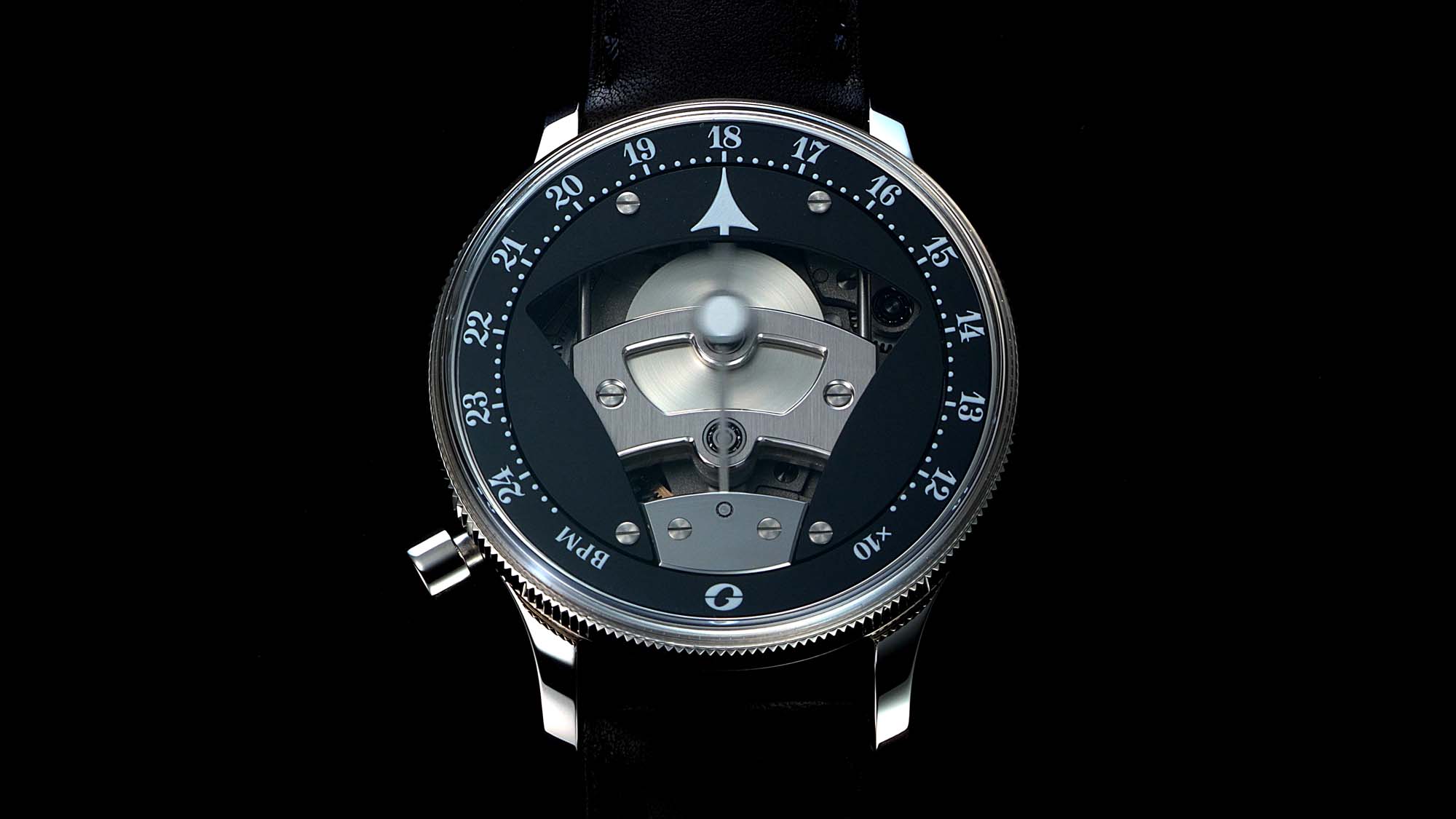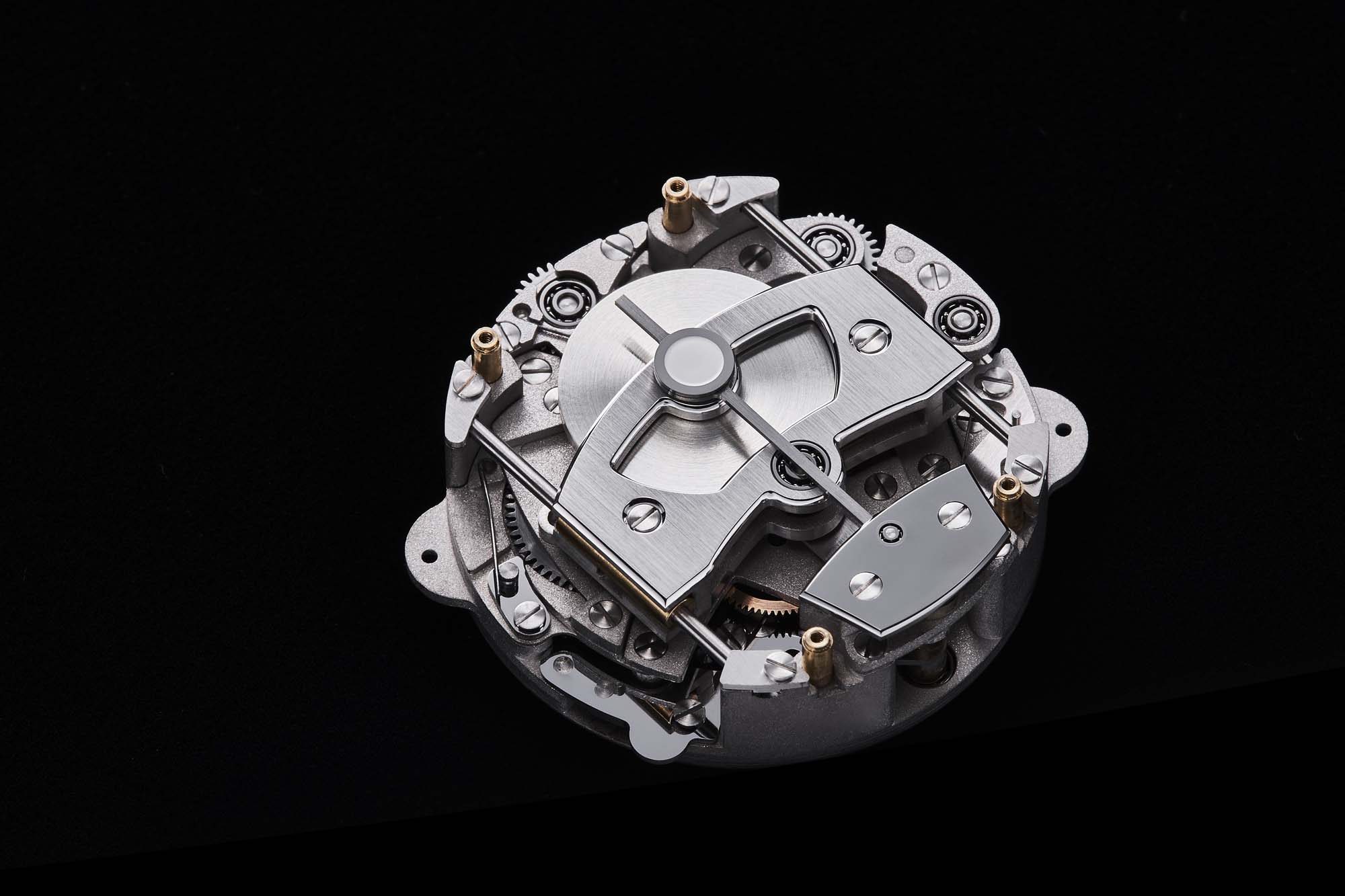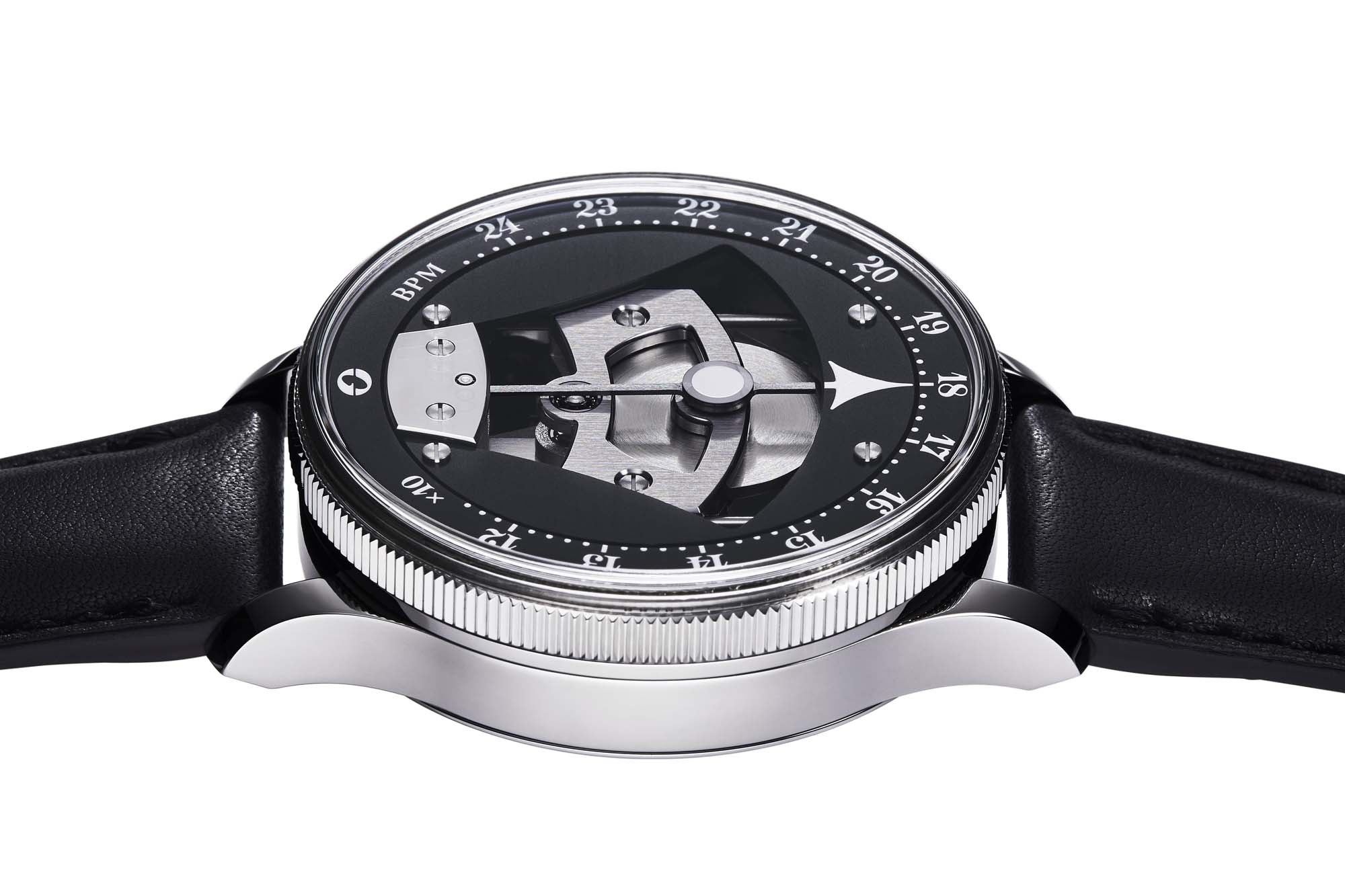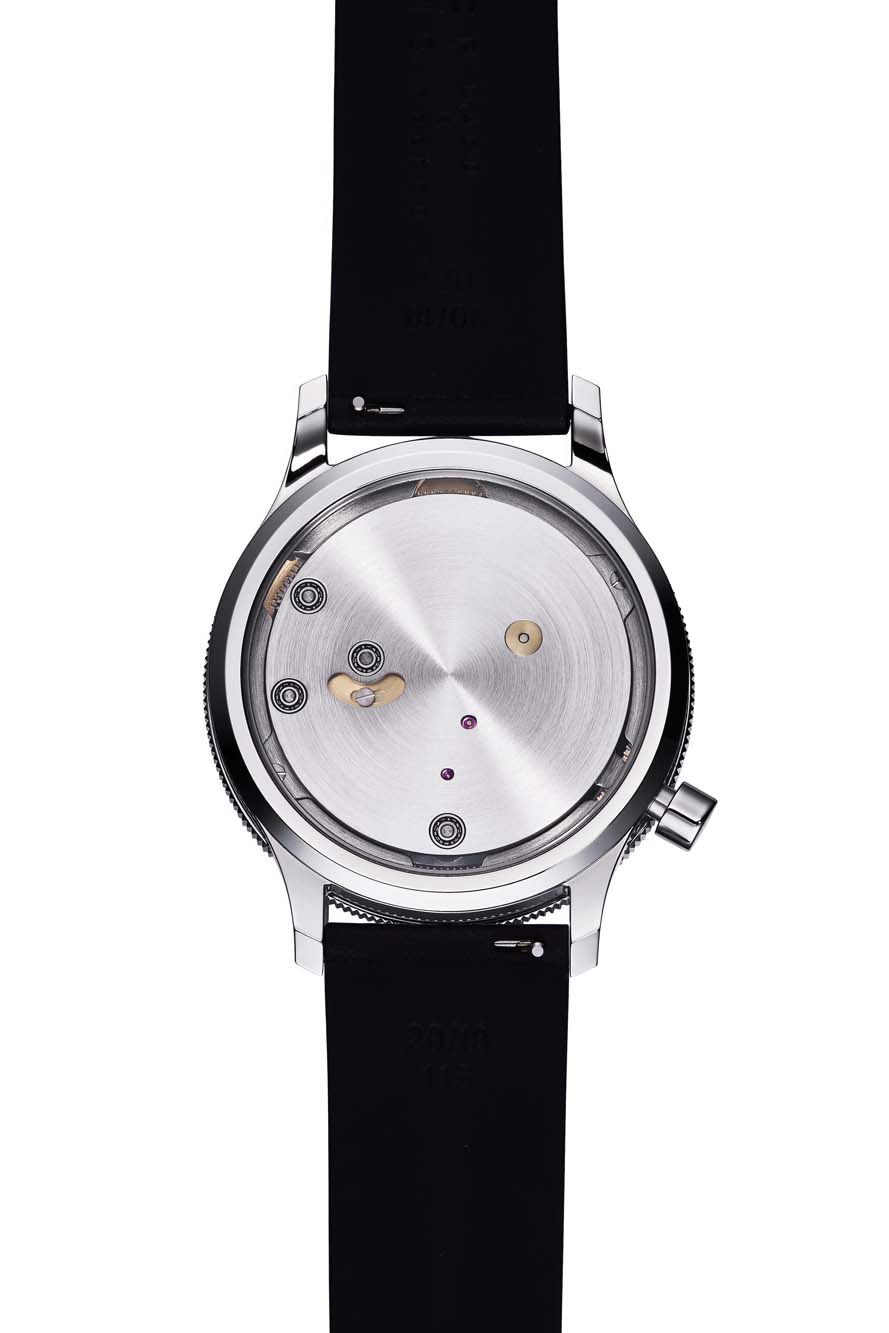I first came across a short video of the Tempo Rubato metronome on Instagram. Before I could message my contact in Japan who posted it, I already had an email waiting for me in the inbox from him introducing this wrist metronome device and its creator to me. I exchanged emails to understand Gaku Okada’s background and details of his wrist metronome.
Okada was born in 2002 in Hokkaido and was influenced by music from an early age, especially jazz drumming. Unlike many watchmakers, he did not cultivate a specific interest in watches, however he did develop a knack for making complex mechanical components.
After graduating from high school, his skills brought him to Hiko Mizuno College of Jewelry, for watchmaking classes. During his freshman year, Okada developed the concept of a mechanical wrist metronome. This idea originated from his practical need as a jazz drummer, as he frequently sought a method to quickly and accurately establish tempo before performances. Although electronic metronomes were readily available, he wanted to create a compact mechanical device that could be worn as a watch.
As a student at the watchmaking school, Okada started part time work at the Precision Watch Tokyo company, working with watchmakers Hajime Asaoka and Jiro Katayama. Asaoka is a well known master watchmaker and the creator of the Kurono Tokyo and Takano brands. Katayama is the founder of the popular Otsuka Lotec brand. Under their mentorship, Okada developed his skills and acquired insights into design principles and conceptual thinking.
Over the course of three years, Okada developed the idea for the wrist metronome as he gained knowledge and experience in watchmaking. He dedicated considerable time to sketching designs, researching mechanisms, and addressing the technical challenges associated with creating such a device.
Okada’s biggest challenge was developing a mechanism capable of producing an adjustable beat and fitting it inside a compact watch case. He studied the composition of a watch escapement and began experimenting with modified designs that would fulfill both timekeeping and beat-keeping functions.
While working on building the escapement, Okada also wanted to make the metronome more functional and intuitive for musicians. A push-button at the 8 o’clock position starts and stops the metronome function. He designed a bi-directional rotating bezel system, which makes it easy to adjust the tempo while the metronome is in operation. A clockwise rotation increases the bpm and winds the mainspring, while a counterclockwise rotation decreases the bpm. He included end stops in both directions to prevent over-rotation and allow for precise adjustments. This functionality allows musicians to fine-tune the tempo on the fly during a live performance.
View this post on Instagram
Okada named this wrist metronome “Tempo Rubato,” which in Italian means “stolen time.” But the exact definition in a musical terminology refers to the expressive and rhythmic freedom by a slight speeding up and then slowing down of the tempo. An apt name for a tool that allows the musicians to set and adjust the tempo during performance.
Even though the bezel is the most interactive component of the metronome, it is worth digging deeper into the custom escapement that makes all the magic happen. Tempo Rubato’s escapement has uniquely shaped escape wheel teeth and pallet fork jewels. This configuration aids the pallet fork’s oscillations to maintain a uniform amplitude for keeping an accurate and consistent tempo.
The escapement has an unusual combination of 5 jewels and 15 ball bearings. The ball bearings are custom made by Minebea Mitsumi, a Japanese company known for its high-precision components. These bearings provide durability in high-stress areas like the winding mechanism and bpm adjustment components.
The 3mm ball bearings are used in high-stress areas: three in the regulator, two in the winding mechanism, two on the pallet fork pivot, and six in the bpm adjustment components. The bearings are durable to withstand the applied direct force when adjusting the bezel.
The 1.5mm ball bearings are used in the upper and lower pivots of the hands. Unlike in a typical watch, these pivots experience direct torque from the pallet fork. The use of ball bearings reduces lateral pivot deviation and ensures smooth and precise movement of the hands.
According to Okada, the escapement is connected to a slotted lever attached to the pallet fork’s pivot. This lever shifts a counterweight from side to side, producing the visual and audible ‘tick’ that indicates each beat. The precision of this mechanism is what allows the Tempo Rubato to function as an accurate metronome, maintaining its beat even with the variability caused by the movement of the wrist.
Okada also designed a custom regulator to adjust the tempo of the metronome. In a typical watch, the regulator function is to correct the timekeeping accuracy when the watch is either running too fast or too slow. In the Tempo Rubato, the regulator features a carriage that can be adjusted vertically by rotating the bezel. This adjustment modifies the effective length of the counterweight’s arm, which in turn affects the period of its oscillation. The principle is similar to the pendulum clock where the rating nut is turned clockwise or anticlockwise to adjust the pendulum bob to go up or down.
The approximate power reserve on the Tempo Rubato is 30 minutes. While it may seem insufficient compared to the power reserve of a watch, the metronome serves a specific purpose – to function as a pre-performance tempo setter or short-term rhythm keeper. The movement operates at a variable frequency of 7,200 to 14,400 vph, corresponding to a range of 120 to 240 bpm. This is a wide enough range for various musical styles and tempos, including slow ballads and up-tempo jazz.
Finally, I briefly touched on the winding function earlier, that if you rotate the bezel clockwise, it increases the bpm and at the same time winds the mainspring. The mainspring barrel and second wheel are sourced from the ETA 7750 movement, which I think reflects on Okada’s practical approach of using widely available parts in his custom-designed movement.
Okada states that he was mindful of design to make it easy to assemble and repair the metronome. Each part is press-fitted into place without requiring extra fastening or adjustments.
I will end on a personal note – my son is the head band director in a middle school music program. Even though he uses an electronic metronome, he loves mechanical watches like his dad. If an affordable wrist metronome could be made in the future, both teachers and students could wear a mechanical device that provides audible and visual tempo cues.
Adjusting the tempo via the bezel can allow students to engage interactively with tempo changes and help them understand how these changes impact the overall feel of a piece of music.
I appreciate Gaku Okada’s out-of-the-box thinking in making practical use of watchmaking for other disciplines. Mechanical automatons exist to entertain, but here is a young watchmaker addressing a specific need in the world of music. I will be following his career and announcements closely.
You can follow Gaku Okada on Instagram here.








